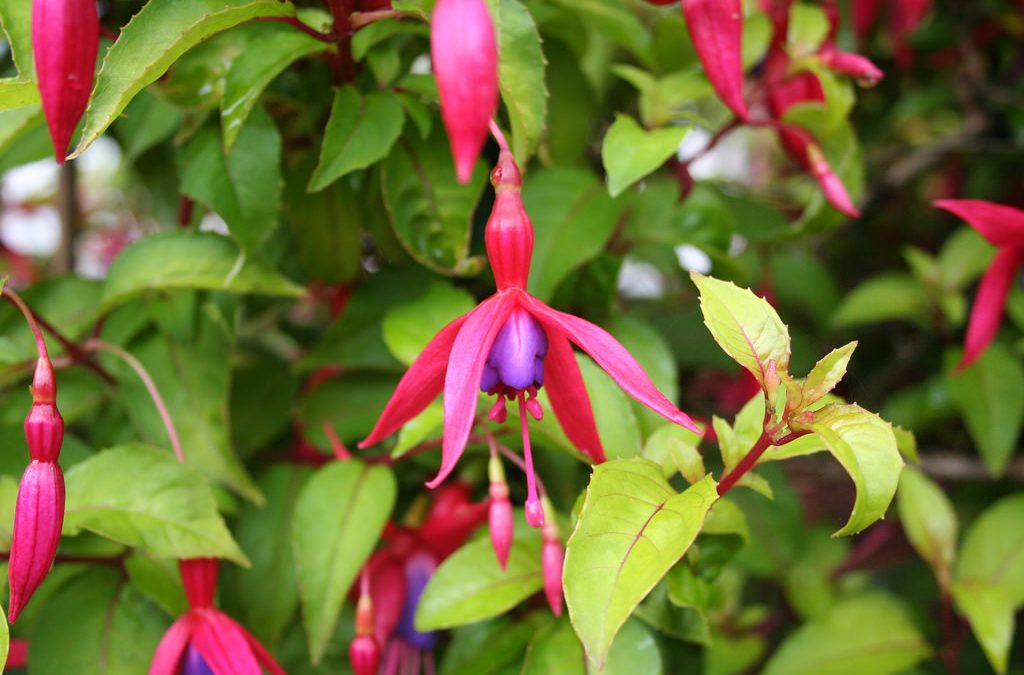About Fuchsias
The genus contains over 100 species with countless more cultivars produced through hybridization. In the U.S. we generally think of them as tender perennials or houseplants, but in their native South and Central America they can be grown as trees and shrubs. Some of the species are trailers. The name Fuchsia is derived from the name of Leonard Fuchs, a German botanist. Fuchsias pendulous flowers are found in an array of shades of white, pink, purple, red and cream. Some are brilliantly multi-colored. Hummingbirds are attracted to the flowers.
How to care for your Fuchsia
Try to plant your fuchsia as soon as possible. Be sure to keep the soil moist to the touch if you do not transplant immediately. Check the frost dates in your area before planting or moving outdoors.
Where do I plant my Fuchsia?
Fuchsias are very popular as showy hanging plant displays, trained as standards, planted in summer bedding and window boxes. They may be grown outdoors year round in zones 8 and 9. Fuchsias require shade and protection from afternoon sun. Provide good air circulation around specimens to help prevent powdery mildew.
How do I plant my Fuchsias?
Dig a hole that is twice as wide and deep as the container that the plant is in. Place the fuchsia in the planting hole making sure it is even with the soil level, and gently firm the soil around it. Water it in very well. If planted in a container, water until it flows out from the drainage hole in the bottom of the pot.
What should I do in order to have my Fuchsias increase in beauty year to year?
During the summer, protect from hot sun, water deeply and fertilize once a week with a balanced fertilizer. In Zones other than 8 and 9, Fuchsias need to be treated as a tender plant. Lift and bring indoors for the winter or take cuttings. Cutting back after bloom will encourage new flowers which are produced on new wood. Be careful not to over-water during the winter.

